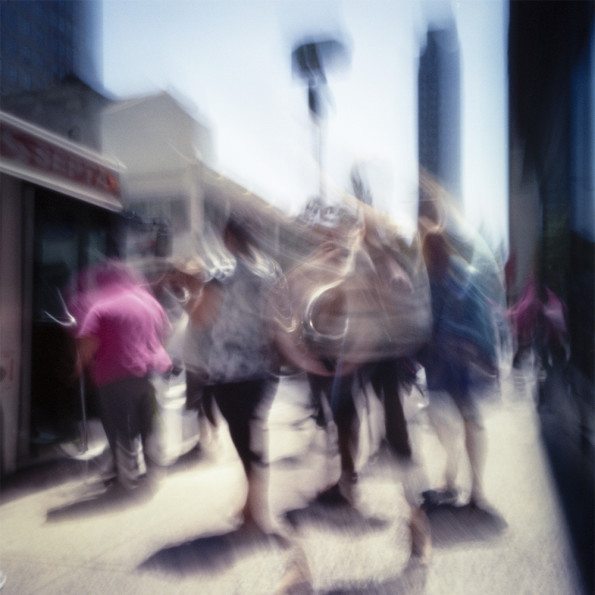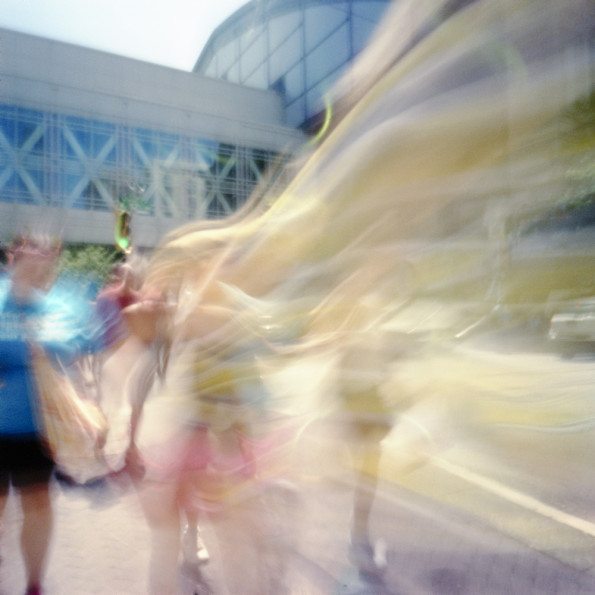All images by Jon Wilkening. Used with permission.
Photographer Jon Wilkening is a 32-year former banker turned photographer living just outside of Philadelphia. He used to do photography in college, but it took a backseat after graduation so that he could focus on his banking job. However, it ended up draining him a bit too much–so he quit his job and threw himself right back into photography.
Jon tells us that he uses light and chemistry to reveal how magical the world can be. These actions are easily applicable to his project called “Handheld.” He describes it to us as a project where he used a pinhole camera to capture street photos that result in having an impressionist feeling.
We talked to Jon about the series; which we find to be such a great reminder that street photography doesn’t need to be tack sharp and technically perfect.
Phoblographer: Talk to us about how you got into photography.
Jon: My roommate in college was a darkroom lab assistant and his excitement for the art form caused me to take the traditional B&W film photography class. I fell in love with photography in the class and finished college also as a darkroom lab assistant. Graduating college also brought an end of my early photography work as I took a job in the banking industry. After 7 years, I absolutely hated work and rediscovered photography as a means of coping with such a non-creative job. I threw myself into photography and quit my job a year later to see what I could create.
Phoblographer: What attracts you to street photography?
Jon: I love the chaotic energy found on the streets. You never know what you will discover or experience. I feed off this uncertainty and risk. The streets force you to be in the moment.
Phoblographer: Where did the idea of creating street photos with a pinhole Holga come from?
Jon: The camera’s f192 aperture meant that every image is a long exposure. Consequently, I began by focusing on subjects common in long exposure work such as a speeding traffic. I traveled down into Philadelphia armed with a sturdy tripod and a timer. However, the images felt like the standard boring images of speeding traffic with the pinhole effect slapped on top. I was then introduced to the blurry color work of Ernst Hass and it sparked the idea of embracing rather than fighting the blur. The freedom from the tripod allowed me to capture the energy that you feel on the streets that was missing from the previous images.
Phoblographer: When shooting, what creatively inspires you to photograph a scene?
Jon: I pull inspiration from the Impressionist painters and their ability to take a familiar scene and transform into the unfamiliar through their expression. I look for patterns and colors that are interesting when smeared by the blur. I am slowly learning through experimentation how to move intentionally to maximize or minimize the effect depending on the scene. I try to create images just recognizable enough that you can figure them out if you invest a little time with them.
Phoblographer: What were you expecting when you first started doing it?
Jon: Honestly, I started the project as an experiment. I developed the first few rolls of film and loved enough of the frames to keep going. Each roll becomes a learning experiment that I hopefully can take and improve on in the future. If I reach a point where there is no mystery or that I know exactly what I am going to get, I think I will move on to another project.
Phoblographer: What do you aim to achieve or do with this series? A book of some sort?
Jon: I hope that the work is interesting enough to warrant a book or a gallery show in the future. However, I try to just focus on producing the best work that I can in the moment. I will figure out the best way to share the work as it becomes available to me.















